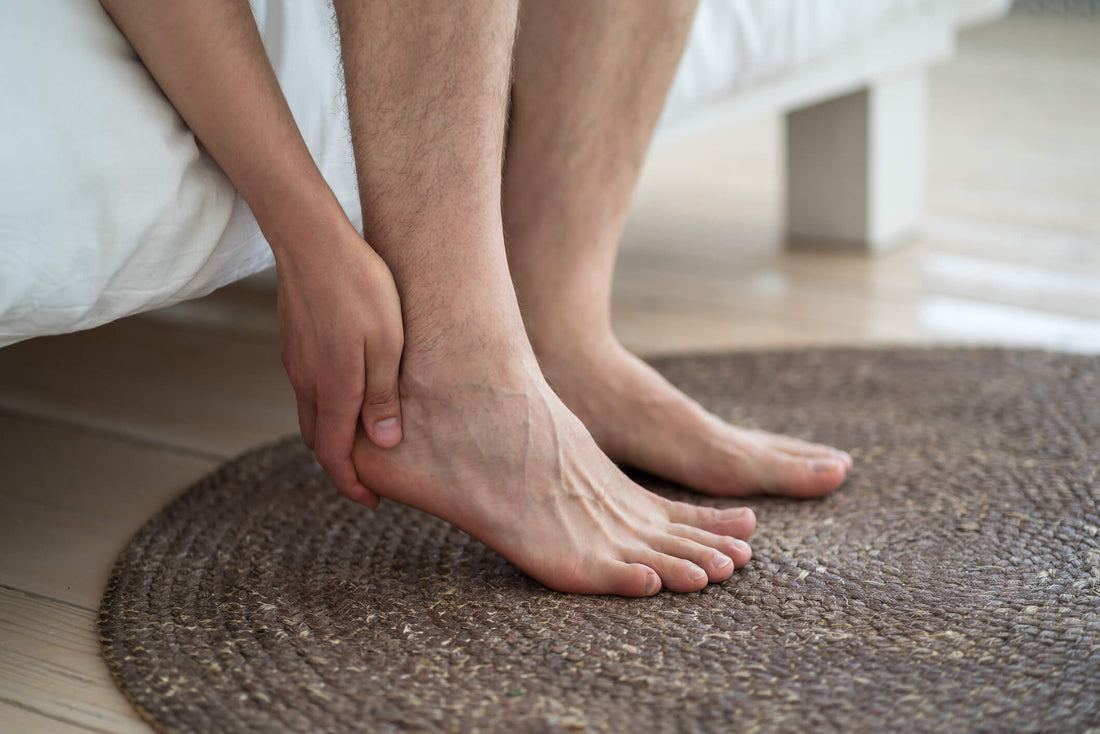
Can Your Skin Restrict Ankle Mobility? A Physio's Guide to Improving Flexibility.
As a Physio, I'm constantly searching for the root cause of my patients' restrictions. We often focus on muscles and joints, but there's a hidden, frequently overlooked factor that can significantly limit your flexibility: your skin.
It might sound surprising, but the sliding quality of your skin is a crucial part of a well-functioning, mobile body. In this guide, I'll explain why this happens, show you how to test it yourself, and give you a simple technique to immediately improve your ankle range of motion.
Key Takeaways:
- Skin is a Functional Layer: Your skin should slide freely over the underlying tissues for optimal joint movement.
- A Common Problem Area: The heel and ankle are prime spots for skin restrictions due to footwear and compression.
- Simple Self-Test: You can easily check your skin's mobility in under 30 seconds.
- Immediate Improvement: A quick mobilisation technique can often lead to an instant increase in ankle flexibility.
The Hidden Role of Skin in Your Mobility
Think of your body as an integrated system of layers—bones, muscles, fascia, and skin—all needing to glide smoothly over one another. Ideally, your skin should move effortlessly in all directions, much like the sheets on a bed.
To appreciate this, try a simple test: place your fingers on your forearm and move the skin around. It's nice and supple, right? This is what healthy, mobile skin feels like.
Now, let's check an area that's often problematic.
The Self-Assessment: Is Your Skin Restricting You?
How to Test Your Ankle Skin Mobility
- Take your shoe and sock off.
- Bend your ankle fully, as if you're trying to bring your toes towards your shin.
- Place your fingers on the skin at the back of your heel.
- Try to move that skin in all directions—up, down, and side-to-side.
What do you feel? Is it silky smooth, or does it feel more like a "toasted cheese sandwich"—sticky, tacky, and restricted?
This lack of sliding isn't just a curious finding; it's a genuine physical restriction. If the skin is glued down, it acts like a handbrake, preventing your ankle from achieving its full, natural range of motion. It may not be the only restricted tissue, but it is easily overlooked.
Why Does This Happen? A Physio's Perspective
Daily life creates these restrictions. When you're in a shoe, your heel is consistently compressed. Combined with body heat, this environment can essentially create a "sticky tack" that adheres the skin down to the underlying bone and Achilles tendon.
This process is part of the body's adaptive nature. If an area doesn't move regularly through its full range, the tissues—including the skin and the fascial layers beneath it—will adapt by becoming less pliable. This is often amplified by poor tissue hydration. The result is a literal gluing-down of these layers, creating a restriction that feels just as real as a stiff joint or a tight muscle.
How to "Unglue" Your Skin and Improve Ankle Mobility
The good news is that this is often a quick fix. Here’s a simple technique to restore sliding and reclaim your ankle range.
Simple Skin Mobilisation Technique
- Position: Sit down and bend your ankle back as far as you comfortably can.
- Mobilize: Use your fingers to firmly grip the skin at the back of your heel. The goal is to move the skin, not just slide your fingers over it.
- Move It: Gently but firmly, pull and move that "sticky" skin in all directions—up towards the calf, down towards the sole, and side-to-side. Hold each stretch for a few seconds.
- Add Traction (Optional): For a better grip, try using a small rubber ball or a dedicated tool (see below). This can help you apply more specific pressure and traction to the restricted tissue.
- Re-test: After spending 1-2 minutes on this, get up and re-check your natural ankle range. Most people feel an immediate change.
Tools to Assist Your Mobilization
While your hands are effective, sometimes a tool can provide better grip and pressure. This concept is known as Instrument-Assisted Soft Tissue Mobilization (IASTM).
- For Home Use: A simple, smooth-edged butter knife from your kitchen can work surprisingly well as a starter tool to help with traction.
- Dedicated Tools: Purpose-built IASTM tools, like a Gua Sha tool or a specialized mobility stick, are designed for this specific purpose and can be more ergonomic.
Please use any tool gently. The goal is to mobilize the skin, not to bruise or cause pain.
Beyond the Ankle: Other Key Areas to Check
The ankle is a common culprit, but it's not the only one. Try the same skin mobility test on these areas:
- Front of Your Shin: Is it silky smooth?
- Outside of Your Thigh (IT Band): Can you grab a handful of skin and wiggle it around freely?
Any area that feels restricted could be subtly influencing your movement patterns and contributing to stiffness or discomfort.
Frequently Asked Questions
How often should I do this skin mobilisation?
You can do it daily, especially if you are dealing with a specific restriction. For maintenance, 2-3 times per week is often sufficient. Listen to your body—the mobilization should feel productive, not painful.
Is this a replacement for stretching?
No, it's a complement. This technique addresses a different type of restriction. For best results, combine skin mobilization with traditional stretching and strengthening exercises for a comprehensive approach to mobility.
What if I don't feel any improvement?
If you've tried this technique and your ankle still feels restricted, the primary issue might be within the joint itself or the deeper muscles and fascia. This is a great first step, but for persistent problems, it's best to consult a physiotherapist for a full assessment.
Conclusion: Don't Overlook the Obvious
Poor skin sliding is a simple yet powerful concept that many people never consider. If you have a tight ankle and have only ever focused on stretching the calf, you might have been missing the final piece of the puzzle.
This approach embodies the root-cause philosophy I bring to my practice: look at the entire system, not just the most obvious part. By improving these restricted surfaces, you can often unlock movement quickly and effectively.
Don't just take my word for it—check it out for yourself. Reclaim your skin's mobility and feel the difference in your movement.
Need Personalised Guidance?
If you'd like help trying to uncover the underlying cause of your pain or dysfunction, consider booking an online Telehealth consultation with Grant here!

